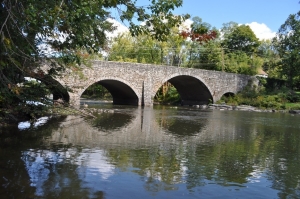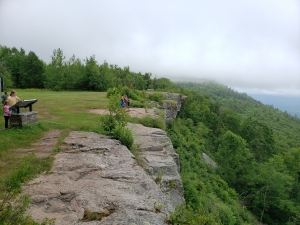Glacial Lake Albany 9-24-20
LAKE ALBANY
On the Rocks, updated by Robert and Johanna Titus
The Woodstock Times. 1998
Geology blossomed in the last half of the 19th century. The science matured, developed its fundamental methodologies, its practitioners fanned out across the globe and wondrous discoveries came to light. Our views of world history would never be the same as we came to recognize the record of epic events carved into the landscapes and etched into their rocks. Fortunately, you do not have to go off to some exotic and distant land to appreciate this. Right here will do just fine. Plenty of great discoveries have been made here. One of them concerns the very nature of the Hudson Valley.
Much of the floor of the Hudson Valley is flat. Now that’s not much of a surprise as the floors of most great river valleys are flat. Rivers eroded these surfaces which are called floodplains. But the flatlands of the Hudson Valley floor are different. Around here the Hudson flows at an elevation of about sea level, but the river valley’s well developed flat level is much higher: About 160 feet in elevation. It cannot be a floodplain, but if not, then just what could it be?
The answer to that question came as quite a surprise to geologists back at the end of the last century. In exploring these odd flat landscapes, geologists eventually encountered pits dug into them and, remarkably, they found lake deposits. There is no mistaking the sediments of a lake. The strata are very fine grained and thinly laminated. The surprise grew even greater as geologists realized how extensive these lake deposits were. They can be found up and down almost the entire length of the Hudson Valley. This was a big lake. Of course, it had to have a name, it was soon dubbed Lake Albany.
The history of Lake Albany goes back to the end of the last ice age. As the Hudson Valley glacier was melting and retreating up the valley it provided a great deal of meltwater, more than enough to supply a large lake. But more than just water was needed; a large lake needs a large basin. The Hudson Valley glacier was so heavy that it actually depressed the crust beneath it and not just a little. Here in the Woodstock area the crust was depressed about 220 feet. That made an equal amount of volume available for the lake; it was 220 feet deep around here.
Deposition of sediment on the floor of Lake Albany was rapid, and a lot of clays accumulated. These can still be seen as the old lake floor which is that flat level of landscape we talked about above; it’s at the 160 foot elevation.
If you would like to see the floor of Lake Albany, there are many good vantage points. Take Churchland Rd. north from the Glasco Turnpike; the intersection is just west of the New York State Thruway. The road follows the shoreline of the old lake and, about three miles north of the intersection you can look to the right and see a good view of the flat old lake bottom stretching out below.
Now we need your help here. Please appreciate our problem. As writers, we are trying to write about flat landscape and make it sound interesting. Such landscapes usually aren’t. Iowa has lots of flat, but nobody has ever found that interesting. But flat here in the Hudson is different, it’s the flat of an ancient lakebed and we think that that is interesting, but we need you, the reader, to help me on this.
Go and take a good look at the view from Churchland Road. Then take a right at Churchland Lane and descend out onto the old lake bottom. Try to imagine about 60 feet of lake water above you. See the sunlight playing upon the passing waves. Watch as small blocks of ice drift by. With a little imagination you should be able to turn that kind of flat into quite an experience . . . we hope.
This really is fundamental to appreciating much of our region’s area geological history. This isn’t Iowa; flat is just not normal around here. When you are looking at flat land, here in the Hudson Valley as well as throughout the Catskill region, it almost always indicates the floor of an old glacial lake. Try to develop an eye for flat landscape. When you do see it try to imagine the lakes that likely were once present and see if that doesn’t change your concept of our landscape. Flat can be interesting, but you just have to understand it.
Contact the authors at randjtitus@prodigy.net. Join their facebook page “The Catskill Geologist.”


